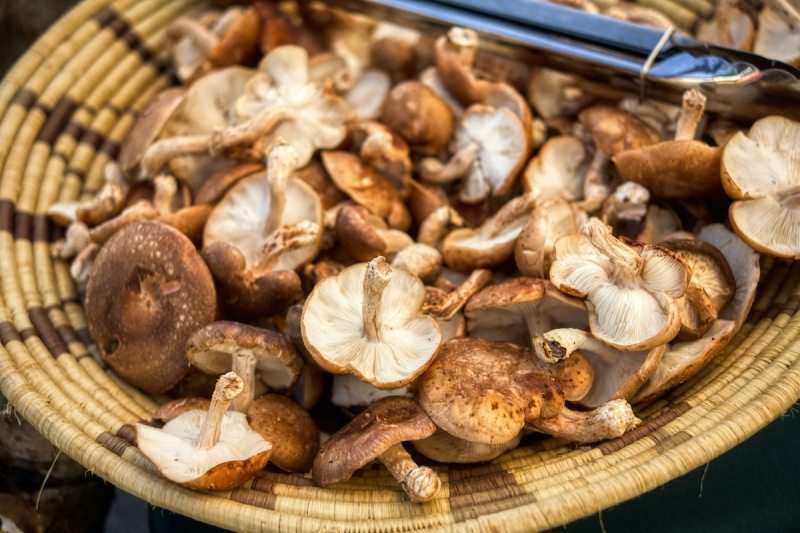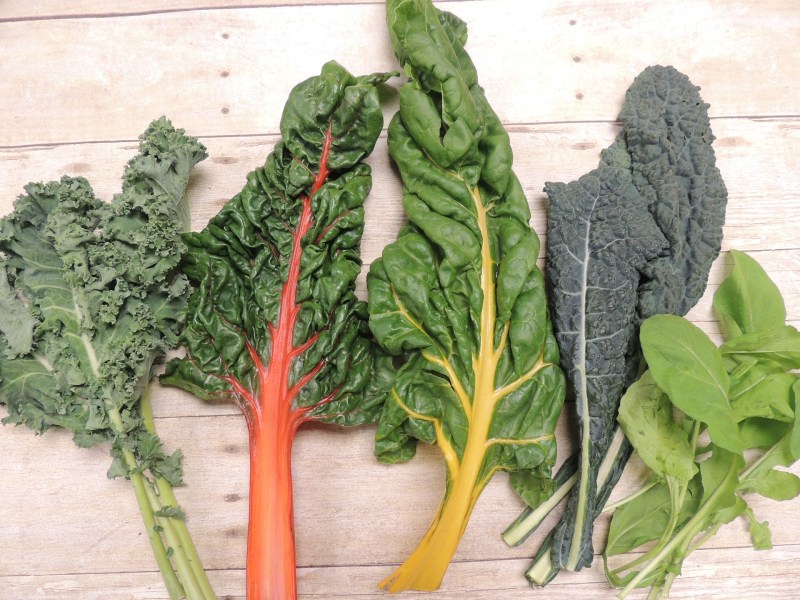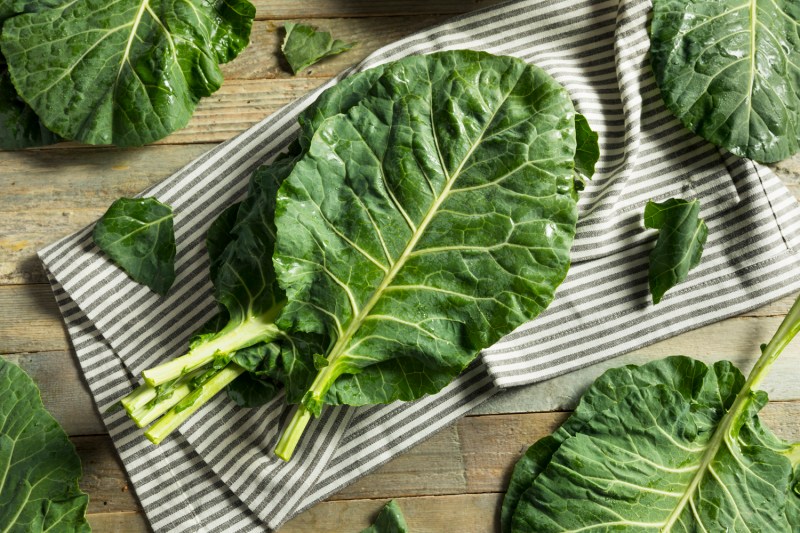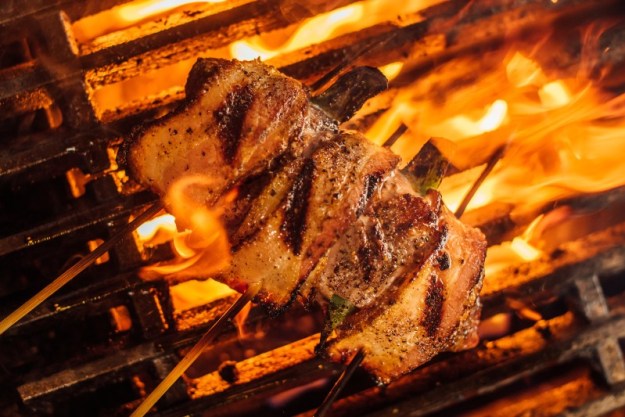
It’s spring and a wonderful time of year for fresh produce to make the best vegetarian recipes all the easier to create (and thoroughly enjoy). If you like meat, so be it, maybe get more creative with your sides or try one of these dishes for fun. If you’re a vegetarian, it’s a fine time to put together some satisfying meals with real heart and soul. Here are some of the best vegetarian and vegan recipes for dinner to try.
Kale sauce with any noodle

This Josh McFadden recipe from Six Seasons
Ingredients
- 1 pound kale, thick ribs cut out
- 2 garlic cloves
- 3/4 cup freshly grated Parmigiano-Reggiano cheese
- 1/2 pound pasta (rigatoni works great)
- Extra-virgin olive oil
- Kosher salt and black pepper
Method
- Bring a large pot of water to boil and add salt.
- While the water is coming to a boil, put the garlic and 1/4 cup olive oil into a small heavy pot or skillet over medium heat and cook until the garlic begins to sizzle. Reduce heat to low and gently cook until the garlic is a light golden color, soft, and fragrant, 5-7 minutes. Pour the oil and garlic into a bowl so it can cool quickly.
- Add kale leaves to boiling water and boil until tender, about 5 minutes. Pull them out with tongs and transfer to a blender.
- Add pasta to still-boiling water and cool until al dente. Scoop out a cup of the pasta water, then drain the noodles.
- Process the kale in the blender with oil and garlic, adding just a bit of the pasta water. Season with salt and pepper.
- Transfer the drained pasta back to the pot and pour in kale puree. Add half the cheese and toss well. Add a touch more pasta water and toss until the pasta noodles are well coated with a bright green, creamy-textured sauce. Serve right away with a drizzle of oil and the rest of the cheese.
Braised tempeh with Madeira sauce

This recipe comes from the online culinary school Rouxbe, which has at least three editions of its own cookbooks. These recipes tend to involve a little more work, but the payoff is tremendous.
Ingredients
For the braised tempeh
- 2 (8-ounce) packages of tempeh
- 1/2 cup tamari or soy sauce
- 1 piece of ginger (2 inches)
- 4 cloves garlic
- 1/4 teaspoon sea salt
- 5 cups water
Method
- To start, slice the garlic and thinly slice about 8 pieces of ginger.
- In a large pot, combine the tamari, garlic, ginger, salt, and water and bring to a simmer.
- To prepare the tempeh, cut each piece of tempeh into about 10 thin slices, diagonally. Add the tempeh to the pot and continue to gently simmer for at least 45 minutes.
Ingredients
For the dredging and frying
- 3/4 cup unbleached white flour
- Sea salt, to taste
- Freshly ground black pepper, to taste
- 3 tablespoons grapeseed or canola oil
- 1/4 cup nutritional yeast
- 2 tablespoons onion granules or powder
- 1 1/2 tablespoons minced fresh rosemary (optional)
Method
- Once the tempeh is ready, drain onto a tray lined with a cooling rack or something that will allow the tempeh to dry as it cools.
- Place the flour, nutritional yeast, onion granules, and rosemary into a shallow bowl and season with salt and pepper.
- Next, dredge the tempeh pieces in the flour mixture, making sure they are completely coated. If you need more moisture on the tempeh, dip them in the braising liquid before dredging.
- To fry the tempeh, heat a large fry pan over medium to medium-high heat. Once hot, add the oil, followed by the tempeh. Cook for 2 or 3 minutes on the first side, or until nice and golden. Then flip and cook for another 2 minutes or so. Remove from the pan and set aside while you prepare the sauce.
- The tempeh will also keep well in a warm oven while you make the sauce.
Ingredients
For the sauce and finishing
- 2 small shallots (approx. 3 tablespoons), minced
- 2 1/2 tablespoons olive oil
- 1 1/2 cups Madeira wine
- 1 sprig fresh thyme
- 2 bay leaves
- 2 1/2 cups vegetable broth
- 1/2 teaspoon crushed black peppercorns
- 1 1/2 tablespoons arrowroot or cornstarch
- 2 1/2 tablespoons non-dairy butter (such as Earth Balance)
- 1/4 cup cold water
Method
- Using the same fry pan, add the olive oil and sauté the shallots over medium-low heat for 2 or 3 minutes, or until translucent and starting to brown.
- Next, add the wine, thyme, and bay leaves. Let simmer until reduced by half.
- Once reduced, add the broth and the crushed peppercorns. Let the sauce cook for 20 minutes.
- Meanwhile, mix together the arrowroot and water.
- After 12 to 15 minutes, whisk in the arrowroot and water mixture. Once you have reached the desired consistency, let it simmer for a minute or so to cook out any arrowroot or cornstarch flavor. At this point, turn off the heat, and if using, whisk in the vegan “butter.” Lastly, taste for seasoning.
- To serve the dish pour this aromatic sauce over the tempeh once plated.
Stewed collards with beans and a Parmigiano rind

This Joshua McFadden recipe from Six Seasons
Ingredients
- 4-5 cups beans
- 3 garlic cloves, smashed and peeled
- 1 sweet onion, sliced
- 1 rind from Parmigiano cheese wedge
- 1 big rosemary sprig
- 1 small dried chili
- 1 bunch collards, ribs cut out
- Extra-virgin olive oil
Method
- Add oil to a deep pot and cook the garlic and onion.
- Add beans with liquid from the can, along with cheese rind, rosemary, chili, and collards. It may take a few minutes for the collards to wilt enough to actually submerge in the liquid. Add water if needed.
- Simmer until the beans are fully tender as well as collards. The cheese will just soften and contribute its flavor to the dish.
- When everything has cooked, remove the pot from heat and let it rest for 30 minutes. Remove the rosemary sprig and whole chili. You can reheat before serving if you like, but flavors and textures will be best if warm, not hot.
Cauliflower steak with mushroom peppercorn sauce

Another Rouxbe recipe selection, this recipe functions just like a steak, with rich, earthy flavors that linger.
Ingredients
For the cauliflower
- 1 head cauliflower, leaves and stem trimmed (don’t core, keep some stem)
- 4 garlic cloves, peeled and smashed
- 2 cups vegetable stock
- 1 cup vermouth or dry white wine
- 2 bay leaves
- 1/2 teaspoon sea salt
Method
- Preheat oven to 350 degrees Fahrenheit. In a 9-by-11-inch baking dish, mix together the garlic, stock, vermouth, bay leaves, and salt. Note: The amount of salt you add will depend on how salty your stock is to begin with. Taste for seasoning and adjust as necessary.
- Place the cauliflower in the liquid and cover tightly with foil. Carefully transfer to the oven and let bake for approximately 30 to 45 minutes. Ultimately, the time will depend on how thick the ‘steaks’ are and your oven.
- Test the ‘steaks’ periodically. When a knife goes in somewhat easily the cauliflower is done. Note: The cauliflower should be cooked through, but still a bit firm. If it’s too soft, it will fall apart during frying.
Ingredients
For the sauce
- 3/4 pound mushrooms, thinly sliced
- 1/4 cup shallots, minced
- 1/4 cup brandy
- Sea salt, to taste
- 2 cups stock
- 1/2 tablespoon oil
- 1/2 tablespoon non-dairy butter
Method
- To prepare the sauce, first gather and prepare all of your mise en place.
- Next, heat a large stainless steel fry pan over medium-high heat. Once hot, add the oil and butter, followed by the shallots. Let the shallots cook until they just start to brown, about 2 or 3 minutes. Then, add the mushrooms and a pinch of salt. Cook the mushrooms until they start to release their juices and start to brown, about 10 to 15 minutes.
- At this point, carefully deglaze with the brandy and let cook for a minute or so, or until most of the brandy has evaporated.
- Next, add the stock, turn down the heat and let simmer while you pan-fry the cauliflower “steaks.”
Ingredients
For the searing
- 2 tablespoons black peppercorns, crushed
- 1 tablespoon oil
- 1 tablespoon non-dairy butter
Method
- Once the cauliflower is ready, carefully remove the foil from the baking dish, making sure you don’t burn yourself from the steam.
- At this point, remove the “steaks” from the liquid and place them on a plate lined with a paper towel. Blot the top of the cauliflower with paper towel as well. This step helps ensure you get a nice golden crust.
- Next, crush the peppercorns on a cutting board — a heavy fry pan works well for this. Then, carefully place the cauliflower into the crushed peppercorns and gently press to ensure some of the peppercorns stick to the cauliflower. Flip and repeat on the other side.
- Next, heat a large fry pan — or better yet, a cast iron skillet — over medium heat. Once hot, add the oil and butter, followed by the cauliflower. Let the cauliflower cook for about 4 to 6 minutes, or until golden brown on each side. Try not to fiddle with the pieces too much; otherwise, the “steaks” will start to fall apart.
- Once done, set aside while you finish the sauce.
Ingredients
For the finishing
- 1/3 cup cashew cream (optional)
- Sea salt, to taste
- 2 tablespoons slurry, or as needed
Method
- To finish the sauce, taste for seasoning, adding salt as needed. Next, add the slurry. For the slurry, either cornstarch or flour can be used. Slowly add the slurry until you reach a nice sauce-like consistency.
- If desired, add the cashew cream. Note that the cashew cream will change the color of the sauce. It will go from a rich dark brown mushroom color to a light brown-beige-colored sauce. However, the taste of the sauce with the added cream is delicious!
- As an experiment, you could remove some of the sauce from the pan before you add the cream. Then, taste the sauce with and without the cream to decide for yourself which one you prefer in appearance and taste.
- If you are using the above Cashew Cream, note that you will likely want to add a bit more water to the recipe. If you desire a very neutral-flavored cream, you can omit the lemon juice and apple cider from the recipe.
Spaghetti with Swiss chard, pine nuts, raisins, and chiles

A Six Seasons
Ingredients
- 8 ounces spaghetti
- 3 tablespoons unsalted butter
- 2 garlic cloves, thinly sliced
- 1 bunch Swiss chard, stems thinly sliced, leaves torn into strips
- Parmigiano-Reggiano cheese
- 1/2 teaspoon dried chile flakes
- 1/2 cup pine nuts
- 1/2 cup raisins
- Kosher salt and black pepper
- Extra-virgin olive oil
- Red wine vinegar
Method
- Combine raisins, a splash of vinegar, and warm water just to cover in a bowl and plump for 20 minutes. Drain.
- Bring a large pot of water to boil and add salt. Add spaghetti. Scoop out about 1/2 cup of pasta water and drain the pasta when done.
- Meanwhile, pour a healthy glug of oil into a large skillet over medium-low heat. Add garlic and pine nuts and let them toast very slowly until lightly browned, about 5 minutes. Add chili flakes and cook for another 10 seconds so they can bloom, then add the drained raisins.
- Increase heat to medium, add chard stems, season with a bit of salt and black pepper, and cook slowly until stems are slightly tender, 3 to 4 minutes. Add torn chard leaves and a splash of pasta water, cover the pan, and cook until wilted, 2 to 3 minutes.
- Add drained pasta and butter to chard and toss well. Taste and adjust seasoning accordingly. Grate cheese over everything, drizzle with more oil, and pile into bowls.
General tips when cooking vegetarian meals

Here are some general tips to make your vegetarian cooking journey enjoyable and delicious.
- Embrace a protein variety: Beans, lentils, tofu, tempeh, nuts, and seeds are all great protein sources in vegetarian meals. Explore different types and cooking methods to keep things interesting.
- Take advantage of the power of umami: Umami, the savory taste, adds depth to vegetarian dishes. Use ingredients like mushrooms, soy sauce, miso paste, nutritional yeast, and aged cheeses (for lacto-vegetarians) to achieve this.
- Spice it up: Spices and herbs are your allies. Experiment with different cuisines and their spice blends to create exciting flavor profiles.
- Don’t fear tofu and tempeh: These versatile soy products can be marinated, baked, crumbled, or pan-fried for a variety of textures and flavors.
- Roast your veggies: Roasting vegetables brings out their natural sweetness and caramelizes them for deeper flavors.
- Learn the bean techniques: Soaking and rinsing beans helps reduce cooking time and gas. You can also use canned beans for a quick and convenient protein source.
Editors' Recommendations
- The best fried chicken recipe you will ever make
- The best spritz cocktail recipes to drink this spring
- Beef up your grill game: 5 tips and tricks for making the best burgers
- You need to try these incredible beef marinades
- How to make the best vodka gimlet for a twist on a classic



